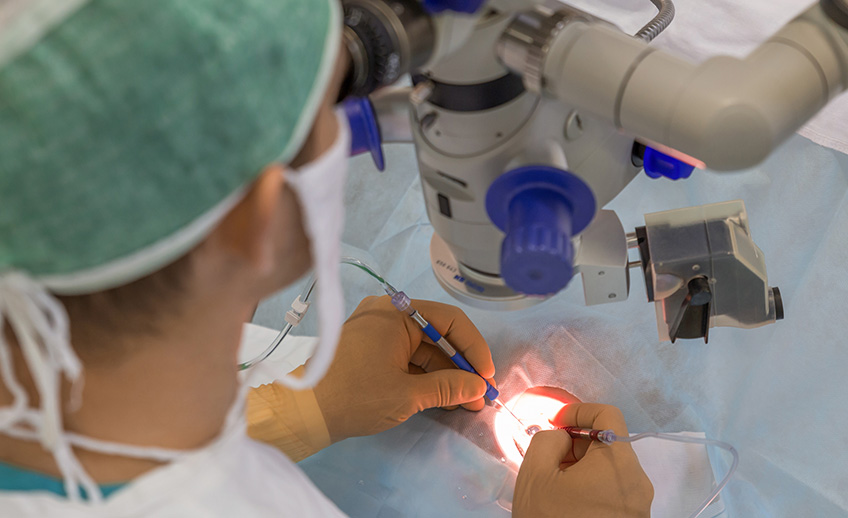A cataract is a clouding of the natural lens inside the eye. When your cataract progresses to the point that daily tasks become difficult and interferes with your quality of life, you will need cataract surgery. Cataracts are the leading cause of visual loss in adults age 55 and older. However, cataracts are highly treatable, and with advances in both cataract surgery and intraocular lenses, more people are experiencing full restoration of their vision than ever before. During surgery, your eye’s natural lens will be replaced by an intraocular lens, or IOL.
An intraocular lens is an artificial lens made of plastic, silicone or acrylic that performs in a similar manner as the eye’s natural lens. Most of today’s IOLs are around a quarter of an inch in diameter and soft enough to be folded so they can be placed into the eye through a very small incision. Recently, there have been advances in the implant technology which gives the surgeon more options in correcting the patient’s postoperative vision. No single lens works best for everyone, and only your doctor can determine the most appropriate option for you. Your overall eye health, the lifestyle you desire after cataract surgery, and financial considerations are all factors your doctor will discuss with you. These techniques are offered by Eye Surgical Associates as optional procedures because most insurance companies, Medicare and Medicaid will only pay for standard cataract surgery and will not cover the expense of these new optional techniques.
Many patients are now electing for the optional procedures to reduce or possibly eliminate dependence on corrective lenses following surgery. There are IOLs available to treat nearsightedness, farsightedness and astigmatism. IOLs usually provide either near or distance vision; these single focus lenses are called monofocal IOLs and are the standard IOL that is covered by most insurance. Some newer IOLs can provide for near, intermediate and distance vision; these multiple focus lenses are called multifocal IOLs.
IOLs that treat astigmatism can be reduced by glasses, contact lenses, and refractive surgery (LASIK or PRK). There is also a procedure called a limbal relaxing incision (LRI) which can be done at the same time as the cataract operation, or as a separate procedure. An LRI is a small cut or incision made into your cornea to make it’s shape rounder.
You can also have one eye corrected for near vision, and the other for distance vision, a choice called monovision.
Cataract surgery is considered one of the safest and most effective medical procedures. More than 3 million cataract surgeries are performed each year. The procedure is done on an outpatient basis and usually lasts between 10 and 20 minutes. Patients may experience little to no pain and can usually return to their normal activities the next day.

